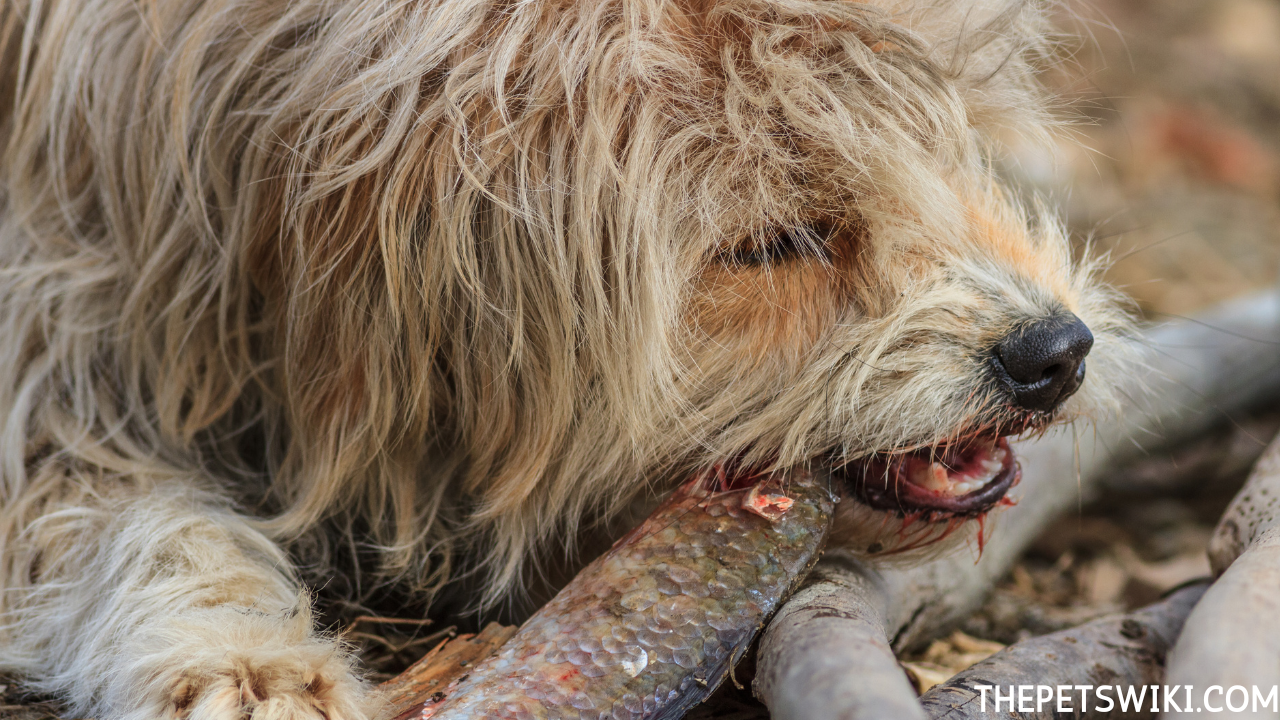Dog parents always strive for the best for their furry companions. Today, more than ever, there’s a quest for a top-notch diet that aligns with the natural and healthiest options available. Our mission is to guide you in discovering the most advantageous diet for your canine friend. Let’s delve into the question of can dogs eat haddock fish?
With their ancestry tracing back to wolves, dogs inherently lean towards a diet centered around meat. While animal-based proteins like chicken, beef, turkey, and lamb dominate their protein intake, the spotlight turns to fish.
Can Dogs Eat Haddock Fish?
Rich in Omega-3 fatty acids, fish stands out as an exceptional protein source. While other meats provide ample protein, fish boasts substantial levels of “healthy fats.” This unique nutritional profile makes fish a preferred choice for dog owners managing their dogs’ weight.
Beyond contributing to the synthesis of crucial enzymes and hormones that uphold your dog’s well-being, fish offers a diverse array of benefits. This makes a compelling case for integrating fish into your dog’s dietary and nutritional regimen.
Benefits of Haddock Fish For Dogs
Dogs, our cherished companions, deserve the best when it comes to nutrition. In the quest for optimal health, pet owners often explore various dietary options, and one such contender is haddock fish. Let’s dive into the sea of benefits that haddock fish can offer to our canine friends.
1. Rich Source of Protein:
Haddock fish is a protein powerhouse, providing the essential building blocks for muscle development, tissue repair, and overall canine well-being.
2. Omega-3 Fatty Acids:
Abundant in Omega-3 fatty acids, haddock fish supports cardiovascular health, reduces inflammation, and contributes to a lustrous coat and healthy skin.
3. Low-Calorie Nutrient Boost:
For dog owners mindful of their pets’ weight, haddock fish presents a low-calorie yet nutrient-dense option, aiding in weight management without compromising on essential nutrients.
4. Vitamins and Minerals:
Haddock fish is a natural source of vitamins and minerals, including vitamin D, phosphorus, and selenium, promoting bone health and overall vitality.
5. Digestive Health:
With its easily digestible nature, haddock fish can be a gentle yet satisfying addition to your dog’s diet, supporting digestive health.
6. Variety in Diet:
Introducing haddock fish brings variety to your dog’s menu, preventing dietary monotony and potentially reducing the risk of allergies associated with a repetitive diet.
7. Joint Support:
Omega-3s in haddock fish contribute to joint health, making it an excellent choice for dogs prone to arthritis or joint stiffness.
8. Brain Function:
The Omega-3 fatty acids, especially DHA, play a role in cognitive function, potentially benefiting your dog’s brain health and agility.
9. Immune System Boost:
The nutrients in haddock fish contribute to a robust immune system, helping your dog ward off illnesses and stay active and playful.
10. Healthy Aging:
Including haddock fish in your dog’s diet may contribute to graceful aging, supporting various aspects of health as they grow older.
Incorporating haddock fish into your dog’s diet, in consultation with your veterinarian, can be a flavorful and health-conscious decision. As with any dietary change, moderation is key, and observing your dog’s response ensures that they enjoy the benefits without any adverse effects.
What Types of Fish Dogs Can Eat?
Dogs can safely enjoy a variety of fish types, but it’s essential to feed them properly cooked and boneless fish. Here are three to four types of fish that dogs can eat:
- Salmon: Rich in omega-3 fatty acids, salmon provides numerous health benefits for dogs, including promoting skin and coat health and supporting joint function.
- Whitefish: Varieties like cod, haddock, and tilapia are excellent sources of lean protein and contain essential nutrients like vitamin D and selenium.
- Trout: Trout is another nutritious option for dogs, offering protein, omega-3s, and B vitamins. It’s easily digestible and suitable for dogs with sensitivities to other proteins.
- Sardines: These small fish are packed with omega-3 fatty acids, calcium, and protein. Sardines can support heart health, improve skin and coat condition, and provide a tasty treat for dogs.
How to Prepare Haddock for Dogs
Preparing haddock fish for dogs is a straightforward process that involves ensuring it’s cooked thoroughly and served without any bones or seasoning that could be harmful to your pet. Here’s a simple guide to preparing haddock fish for your dog:
1. Select Fresh or Frozen Haddock
Choose fresh haddock from a reliable source or opt for frozen haddock that is free from any added preservatives or seasonings.
2. Thaw Frozen Haddock
If using frozen haddock, thaw it thoroughly in the refrigerator overnight or under cold running water before cooking.
3. Remove Bones and Skin
Ensure the haddock is boneless and skinless, as fish bones can pose a choking hazard and the skin may contain unwanted oils or seasonings. Use a pair of tweezers to carefully remove any remaining bones from the fish fillets.
4. Cooking Methods
Haddock can be cooked in various ways, including baking, grilling, or poaching. Avoid frying the fish or adding any oils, spices, or seasonings that may be harmful to your dog.
5. Baking Method
Preheat your oven to around 350°F (175°C). Place the haddock fillets on a baking sheet lined with parchment paper. Bake for about 15-20 minutes or until the fish is cooked through and flakes easily with a fork.
6. Grilling Method
If grilling, lightly oil the grill grates and preheat your grill to medium-high heat. Place the haddock fillets directly on the grill and cook for about 5-7 minutes per side or until done.
7. Poaching Method
To poach haddock, place the fish fillets in a shallow pan or skillet. Add enough water or low-sodium broth to cover the fish. Bring to a gentle simmer over medium heat and cook for about 5-7 minutes or until the fish is opaque and cooked through.
8. Cool and Serve
Allow the cooked haddock to cool completely before serving it to your dog. You can cut the fish into bite-sized pieces or shred it to make it easier for your furry friend to enjoy.
9. Storage
Store any leftover cooked haddock in an airtight container in the refrigerator for up to 2-3 days, or freeze it for longer storage. Thaw frozen haddock in the refrigerator before reheating and serving to your dog.
By following these simple steps, you can safely prepare haddock fish for your dog, providing a nutritious and tasty addition to their diet. Always monitor your dog for any adverse reactions to new foods and consult with your veterinarian if you have any concerns about their dietary needs.
Can Dogs Eat Raw Haddock?
While dogs can technically eat raw fish, including haddock, it’s generally not recommended. Raw fish poses several risks to dogs, including the potential for bacterial contamination, parasites such as salmonella and listeria, and the presence of thiaminase, an enzyme that can break down thiamine (vitamin B1) and lead to deficiency over time.
Feeding raw fish to dogs can also increase the risk of gastrointestinal upset, including vomiting, diarrhea, and even pancreatitis in some cases. Additionally, raw fish may contain small bones that can pose a choking hazard or cause gastrointestinal obstruction if ingested.
Cooking fish thoroughly helps to kill harmful bacteria and parasites, making it safer for dogs to consume. Therefore, it’s best to avoid feeding raw haddock or any other raw fish to your dog and instead opt for cooked fish prepared without any seasoning or added ingredients that could be harmful to your pet.
If you’re interested in adding fish to your dog’s diet, consider cooking it thoroughly by baking, grilling, or poaching it without adding any oils, spices, or seasonings. Always consult with your veterinarian before making any significant changes to your dog’s diet, including introducing new foods like fish.
Can Dogs Eat Haddock Bones?
It’s not recommended to feed haddock bones, or any other fish bones, to dogs. Fish bones can splinter easily and may pose a choking hazard or cause internal injuries if ingested. Additionally, fish bones can also become lodged in the throat, stomach, or intestines, leading to gastrointestinal obstruction, which is a severe and potentially life-threatening condition.
Even small bones, such as those found in haddock, can cause significant harm to dogs if swallowed. Therefore, it’s essential to remove all bones from haddock or any other fish before feeding it to your dog.
When preparing fish for your dog, ensure that it’s boneless and cooked thoroughly to eliminate any risk of harm. By taking these precautions, you can safely incorporate fish into your dog’s diet.
Conclusion
In conclusion, while haddock can be a nutritious addition to your dog’s diet when prepared properly, certain precautions must be taken to ensure your pet’s safety and well-being. It’s essential to remove all bones from haddock before feeding it to your dog to prevent choking hazards and gastrointestinal issues.
Additionally, it’s best to cook haddock thoroughly to eliminate the risk of bacterial contamination, parasites, and the presence of harmful enzymes. Raw fish, including haddock, is not recommended for dogs due to these potential health risks.
Suggested Reading: Can Dogs Eat Fish Sauce?
By following these guidelines and consulting with your veterinarian about your dog’s dietary needs, you can safely incorporate haddock into your pet’s diet as a healthy and nutritious treat. As always, monitoring your dog for any adverse reactions to new foods and seeking professional guidance when needed is key to ensuring their health and happiness.


